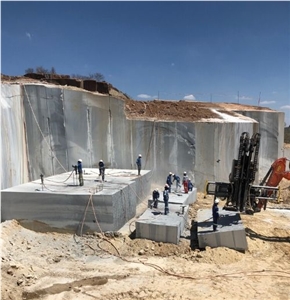Revealing Granite Quarries in South Africa Legacy: A Journey Via Quarries
Revealing Granite Quarries in South Africa Legacy: A Journey Via Quarries
Blog Article
Unearthing the Rich Background and Lasting Practices of Granite Quarrying
As we depend on the precipice of uncovering the complex tapestry of granite quarrying, a trip with time exposes not simply the physical act of removing rock but also the cultural and historical relevance woven into the extremely fabric of this method. From the old beginnings that laid the structure for modern-day quarrying strategies to the sustainable methods that are shaping the future of this industry, each sculpt mark on granite surfaces tells a story waiting to be unearthed (granite quarries in south africa). The legacy of granite quarrying extends much past plain extraction; it is a testament to human ingenuity, strength, and the long-lasting appeal of this majestic rock
Ancient Beginnings of Granite Quarrying
Going back to ancient worlds, the practice of quarrying granite has actually been an integral component of human history and architectural innovation. The earliest proof of granite quarrying dates back to ancient Egypt, where substantial pyramids and intricate sculptures were crafted from this long lasting stone. The Egyptians utilized primitive devices to draw out granite blocks from quarries, showcasing the importance of this material in their huge buildings.
Moving on in history, the Greeks also made significant payments to the quarrying of granite. The Greeks made use of granite in numerous architectural marvels, such as temples and sculptures, showing their skill in shaping and sculpting this hardy rock. The Romans even more refined the methods of quarrying granite, utilizing advanced tools like chisels and hammers to remove and shape granite for their legendary structures.
With the centuries, the method of quarrying granite has actually advanced, with contemporary technologies boosting performance while preserving the classic appeal of this natural stone - granite quarries in south africa. From old people to contemporary builders, the tradition of granite quarrying remains to shape our globe
Evolution of Quarrying Techniques
The development of quarrying strategies has been marked by a constant development towards higher efficiency and accuracy in drawing out granite. Early quarrying techniques entailed hands-on labor with basic devices such as chisels, hammers, and wedges to extract granite blocks from the planet.
In even more current times, the advent of equipment reinvented the quarrying market, enabling quicker extraction prices and boosted efficiency. Technologies such as ruby wire saws, high-pressure water jets, and pneumatically-driven drills have actually become typical in modern-day quarries, enabling exact cutting and minimized waste. Moreover, advancements in computer-controlled tools and 3D modeling have actually maximized quarrying he said procedures, leading to minimal environmental influence and enhanced sustainability practices. As the demand for granite continues to climb, the development of quarrying strategies continues to be integral to meeting industry needs successfully and sustainably.
Social Importance of Granite
Granite holds an extensive cultural value throughout various worlds due to its enduring presence in building work of arts and respected monuments. The cultural importance of granite prolongs past its physical qualities; it personifies strength, stability, and timelessness, making it an icon of sustaining legacies and customs.

Sustainable Practices in Quarrying
In the middle of the rich background of granite quarrying and its social relevance lies an expanding focus on sustainable techniques within the industry. As environmental recognition and problems regarding resource depletion have enhanced around the world, the quarrying market has actually progressively accepted lasting approaches to reduce its effect on the setting and surrounding areas.

Additionally, reclamation and recovery of quarry websites post-extraction are important to lasting methods. By restoring quarried areas to an all-natural or advantageous state, such as producing wild animals environments or recreational rooms, quarriers can offset the environmental impact of their procedures and contribute positively to the regional ecosystem.
Tradition of Granite Quarrying
With a historic background steeped in craftsmanship and commercial progression, what sustaining influence has granite quarrying left on the landscape of modern-day society? The tradition get more of granite quarrying goes beyond mere removal methods; it has shaped building marvels, urban landscapes, and social heritage worldwide. The resilient nature of granite has actually made it a favored option for monoliths, buildings, and infrastructure, standing as a testimony to the ability and artistry of quarry workers throughout generations.
In addition, the economic footprint of granite quarrying can not be ignored. The sector remains to supply job opportunity and drive neighborhood economic climates in areas where granite removal is prevalent. It has actually also spurred technological improvements in quarrying methods and equipment, causing a lot more efficient and lasting techniques.
In terms of sustainability, the tradition of granite quarrying consists of initiatives to minimize ecological effects check out this site with improvement projects and liable resource monitoring. By balancing financial interests with environmental stewardship, the industry aims to guarantee that future generations can remain to profit from this enduring all-natural source.
Conclusion

Report this page